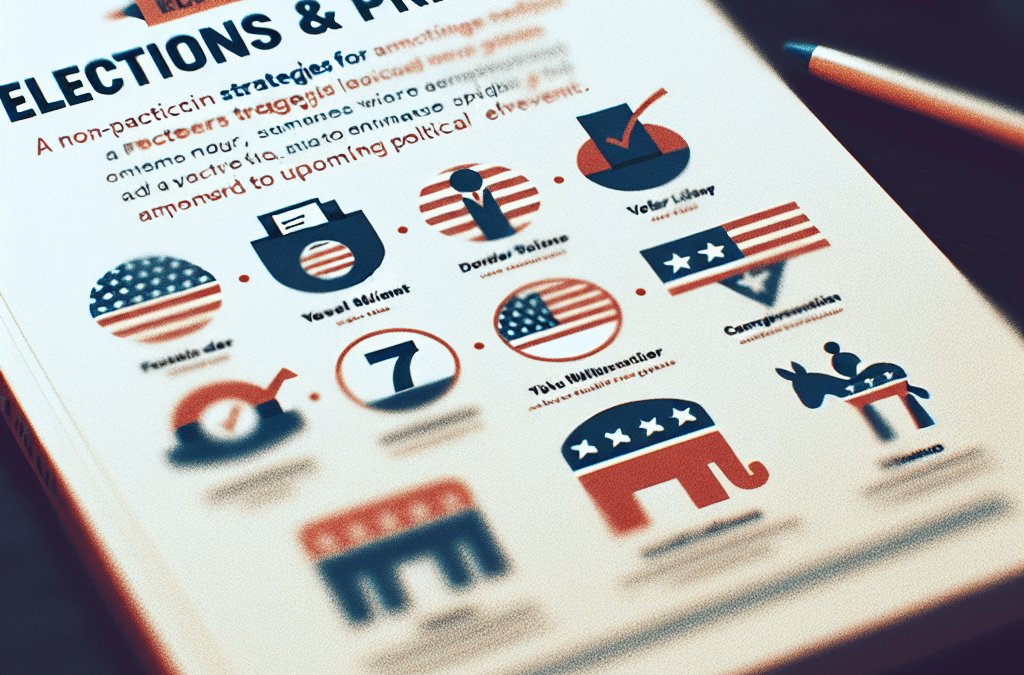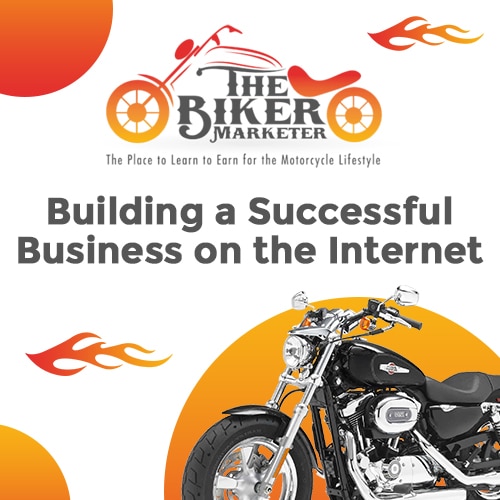Table of Contents
- 1. Understanding the Electoral Landscape
- 2. Building a Strong Campaign Team
- 3. Effective Voter Engagement
- 4. Utilizing Data Analytics and Polling
- 5. Crafting Your Messaging and Branding
- 6. Leveraging Digital and Social Media
- 7. Navigating Legal and Ethical Considerations
1. Understanding the Electoral Landscape
Analyzing Voter Demographics and Trends
One of the foundational steps in any Elections & Primaries strategy for 2025 is understanding the electorate. By analyzing voter demographics, you can identify key voting blocs, regional preferences, and emerging trends. Recent studies show that younger voters and minority groups are becoming increasingly influential, accounting for nearly 40% of the electorate in many regions by 2025.
To stay ahead, campaigns should leverage data from recent polls, census updates, and social media insights. This helps tailor messages that resonate with specific communities. For example, addressing climate change may be pivotal in urban areas, while economic stability might dominate rural voter concerns.
Additionally, understanding historical voting patterns can help predict turnout and identify swing districts. Successful campaigns analyze these elements continuously, adapting strategies to shifting demographics and political sentiments.
Monitoring Political Climate and Key Issues
Staying informed about the current political climate is critical. In 2025, issues such as inflation, healthcare reform, and technological innovation are at the forefront of votersâ minds. Candidates who can align their platforms with these concerns often see better engagement and support.
Regularly following news outlets, social media discussions, and policy debates will keep your campaign responsive. Additionally, understanding opponents’ positions allows you to craft counter-messages effectively. Recognizing how national and local events influence voter sentiment provides a strategic advantage.
This proactive approach leads to better messaging and campaign tactics, ultimately increasing the chances of success in Elections & Primaries.
2. Building a Strong Campaign Team
Recruiting Experts and Volunteers
A winning campaign in Elections & Primaries depends heavily on assembling a dedicated, knowledgeable team. For 2025, focus on recruiting campaign managers, communication strategists, data analysts, and grassroots volunteers. These individuals are vital in executing your campaign plan effectively.
Volunteer engagement is especially crucial; they can expand your outreach efforts exponentially while reducing costs. Successful campaigns provide training and clear roles to maximize volunteer impact, fostering a sense of ownership and enthusiasm.
Additionally, diversifying your team to reflect the communities you aim to serve can build trust and credibility. Including members with varied backgrounds enhances creativity and problem-solving capabilities within your campaign.
Leadership and Organizational Structure
Establishing a clear organizational hierarchy is essential for operational efficiency during Elections & Primaries. Define roles, responsibilities, and communication channels early on. This prevents confusion and ensures swift decision-making amid the fast-paced nature of campaigns.
Leadership should emphasize transparency and motivate the team with a shared vision. Regular strategy meetings and feedback loops keep everyone aligned and adaptable to new developments.
In 2025, adopting project management tools and communication platforms like Slack or Asana can improve coordination. A well-structured team is your backbone for a successful primary season and beyond.
3. Effective Voter Engagement
Personalized Outreach and Events
Connecting with voters on a personal level remains one of the most effective strategies in Elections & Primaries. In 2025, candidates benefit from personalized outreachâwhether through door-to-door canvassing, town halls, or digital town halls. These interactions build trust and provide valuable feedback.
Hosting events that cater to specific communities allows candidates to address local concerns directly. For example, holding a town hall focused on rural economic development can resonate deeply with local voters.
Furthermore, leveraging modern tools like virtual platforms enables reaching voters who may not attend physical events, broadening your outreach significantly. Consistency and authenticity in engagement are key to converting interest into votes.
Using Data-Driven Voter Outreach
Data analytics plays a vital role in crafting targeted voter outreach strategies. By analyzing voter data, campaigns can identify high-priority districts, likely supporters, and potential swing voters. Tailoring messages to these groups increases the likelihood of vote conversion.
Automated mailers, SMS campaigns, and targeted social media ads are examples of efficient outreach tools bolstered by data. In 2025, expect more campaigns to use AI-powered analytics for real-time adjustments, ensuring messaging remains relevant and impactful.
This approach maximizes resources and builds stronger relationships with constituents, which is instrumental in tight primaries and elections.
4. Utilizing Data Analytics and Polling
Polling Techniques for 2025
Accurate polling is crucial in Elections & Primaries to gauge voter sentiment and refine campaign strategies. In 2025, technological advances allow for more sophisticated methods like online panels, mobile surveys, and AI-powered sentiment analysis.
While traditional phone polls still have value, integrating digital polling methods provides richer data and faster insights. Consistently tracking polling trends helps campaigns identify shifts in voter preferences or emerging issues.
Additionally, understanding polling margins of error and potential biases ensures you interpret data correctly, preventing missteps and enabling data-backed decision-making.
Data Analysis for Campaign Optimization
Beyond polling, analyzing voter behavior, donation patterns, and engagement metrics helps optimize campaign efforts. For example, identifying which digital ads generate the most clicks allows you to allocate resources more effectively.
In 2025, integrating AI tools with campaign management software offers predictive analytics that forecast voter turnout and support levels. These insights enable proactive adjustments to your strategy, such as increasing outreach in critical regions or refining messaging.
Consistent data analysis ensures the campaign remains agile, responsive, and competitive throughout the election cycle.
Get All Your Patriotic and Biker Wear Gear Here:

https://PatrioticBikerWear.com
5. Crafting Your Messaging and Branding
Creating a Compelling Narrative
In Elections & Primaries, your message needs to stand out and resonate. Crafting a compelling narrative that aligns with votersâ hopes, fears, and values is essential. Authentic storytelling about your background, vision, and policy plans can forge emotional connections.
For 2025, focus on issues like economic recovery, social justice, climate action, and technological progressâtopics that are top of mind for many voters. Your story should demonstrate how your candidacy addresses these concerns.
Consistency across all channels â speeches, social media, ads â reinforces your brand and builds trust with voters. Effective messaging isnât just what you say; itâs how you make voters feel about your campaign.
Visual Identity and Campaign Branding
Strong visual branding can make your campaign memorable. From logo design to color schemes and slogan development, every visual element should reflect your message and appeal to your target audience.
In 2025, campaigns increasingly use digital branding strategies, including short videos, infographics, and interactive content, to engage voters. Consistent branding across platforms enhances recognition and reinforces your narrative.
Remember, memorable branding distinguishes your campaign in a crowded primary field, making it easier for voters to remember and support you on election day.
6. Leveraging Digital and Social Media
Maximizing Reach Through Social Platforms
In 2025, social media remains one of the most powerful tools for Elections & Primaries. Platforms like X (formerly Twitter), Facebook, TikTok, and Instagram allow campaigns to reach diverse audiences quickly and cost-effectively.
Creating engaging, shareable content tailored to each platform is vital. Short videos explaining policy positions, live Q&A sessions, and behind-the-scenes looks foster transparency and trust.
Paid advertising campaigns on social media can target specific demographics and geographical areas, increasing efficiency and ensuring your message reaches the right voters.
Building an Online Community and Brand Loyalty
Beyond outreach, social media helps foster a sense of community around your campaign. Engaging with supporters through comments, polls, and user-generated content builds loyalty and advocacy.
In 2025, integrating social media data analytics allows you to monitor sentiment, identify influencers, and address concerns proactively. These digital conversations can influence public perception and voter turnout.
Maintaining an active, positive online presence is crucial for securing the support needed to win Elections & Primaries.
7. Navigating Legal and Ethical Considerations
Understanding Campaign Laws and Regulations
Running a successful campaign in 2025 requires strict adherence to election laws, campaign finance regulations, and ethical standards. Familiarize yourself with federal and state requirements, including reporting donations and spending.
In particular, be aware of recent changes in disclosure laws, social media advertising transparency, and data privacy regulations, which have become more stringent in recent years.
Non-compliance can lead to hefty fines, damage your reputation, and jeopardize your campaign. Consulting with legal experts regularly ensures your strategies remain compliant throughout the election cycle.
Maintaining Campaign Integrity and Transparency
Voters increasingly scrutinize candidates’ integrity and authenticity. Transparent communication about campaign sources, policies, and intentions builds credibility in Elections & Primaries.
Ethical campaigning â avoiding misinformation, negative ads, and misleading tactics â fosters trust and long-term respect from the electorate. In 2025, authenticity can differentiate your campaign in a crowded primary field.
Implementing an internal code of ethics and addressing issues promptly demonstrate your commitment to integrity, which is vital for a victorious campaign.
Conclusion
Successfully navigating Elections & Primaries in 2025 requires a comprehensive approach that combines strategic planning, effective engagement, data utilization, and strict adherence to legal standards. By implementing these 7 proven strategies, candidates and campaign teams can maximize their chances of success. Remember, understanding the intricacies of Elections & Primariesâalong with adaptability and integrityâare your most valuable assets in this dynamic political landscape. Stay prepared, stay informed, and stay committed to your vision in 2025!
Frequently Asked Questions
1. Why are Elections & Primaries so important in a political campaign?
Elections & Primaries determine the candidates who will represent parties and influence policy decisions. Winning primaries is often the first step toward a general election victory, making strategic primaries crucial for campaign success.
2. How can data analytics improve my primary campaign in 2025?
Data analytics help identify voter preferences, target key demographics, and optimize resource allocation. Using real-time insights, campaigns can adjust their messaging and outreach for maximum impact.
3. What are the main legal considerations for campaigns in 2025?
Campaigns must comply with strict laws regarding campaign finance, advertising transparency, and data privacy. Staying informed of current regulations prevents legal issues and builds voter trust.
4. How do Elections & Primaries differ from general elections?
Primaries are used to select party nominees and often involve more ideological voting, while general elections determine the ultimate officeholder. Campaign strategies vary accordingly to address different voter bases and competitive dynamics.
Get All Your Patriotic and Biker Wear Gear Here:

https://PatrioticBikerWear.com









